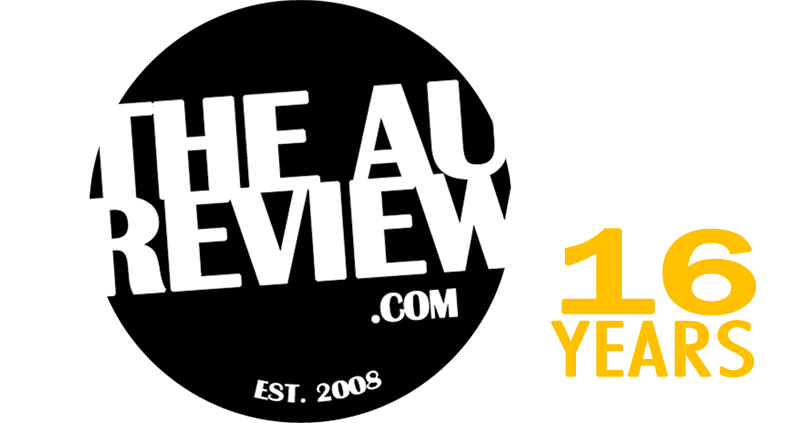
The Prince Kitano New York is almost the mid-way point between the Chrysler Building and Empire State Building. It’s also just a 500-metre walk from Grand Central Station and, on the way, Bryant Park. You’ll only walk a short distance to get to the picturesque edge of East River with its many vantage points, and it doesn’t take much effort to strut on up to Central Park every morning.
This pop of Japanese hospitality on the eastside of Midtown Manhattan is incredibly well-located, strapped alongside the ritzy wide berth of Park Avenue with the studied confidence of an old-school Tokyo stalwart. Signposted with two trim bonsai trees strategically placed out front, it’s the only example of precision-like Japanese hospitality sketched onto the chaos of Midtown Manhattan.
And that means one very valuable thing: calm.
Japanese culture is meditative when it comes to design, and so this hotel is appropriately built for privacy. Something that’s increasingly valuable in a city as frenetic and emotionally exhausting as New York City. I find it no surprise that most of the guests here seem to be important Japanese business types. All the staff can speak fluent Japanese, the rooms remind me of a few Prince-owned hotels I’ve stayed at in Tokyo, and there’s also one of the more underrated (and approachable) sushi omakase experiences buried underneath the 149-room hotel.
Location
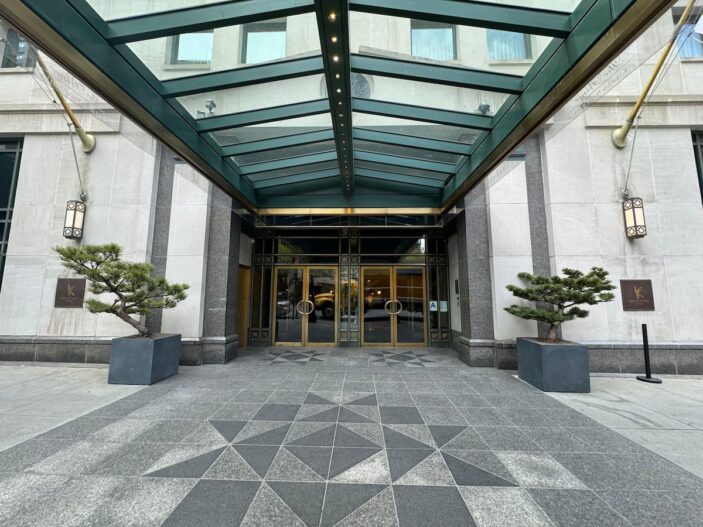
As mentioned above, The Prince Kitano is the ideal location in Manhattan and it’s not surprising to find out its one of the most popular for business travellers. You can be where you need to go within minutes, and in a walking city like NYC that value cannot be overstated.
Park Avenue is also relatively calm compared to a lot of the other major streets in Manhattan. Yes, you’ve got the noise of the traffic, but you won’t know it even exists once you saunter off into the big and impressively symmetrical lobby.
With Central Station just a quick walk away, this is one of the most strategic locations for just about anyone visiting New York City – first timers and seasoned vets. It also opens you up to other cities and the wider New York State, so pegging on a quick day trip to your city stay is no effort at all.
Design
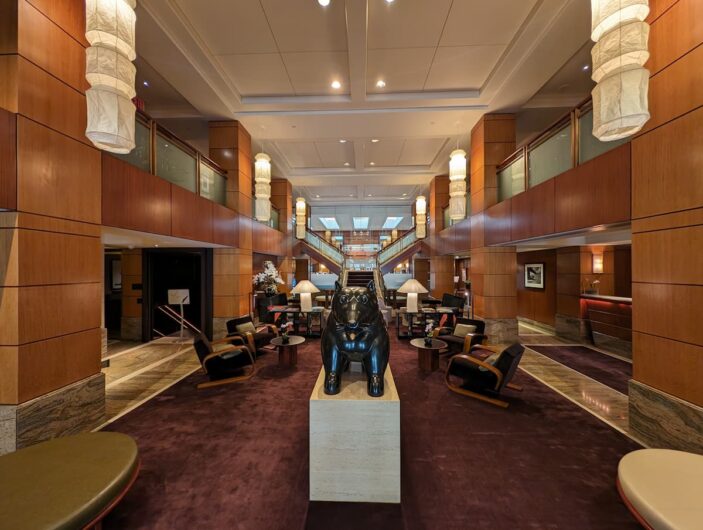
Design is as sharp and precise as the service itself. Everything works like a well-oiled machine. The lobby isn’t overly ornate and showy like some other New York City hotels. It’s just a nice place to sit and recover from everything Manhattan has to throw at you.
The lobby leads up to a sightly double staircase, mirroring the rest of the space with gilded finishings and elegant carpeting. That’s one thing a lot of hotels don’t get right. Carpeting. Prince Kitano is different in this regard, and the visual difference it makes is outstanding.
The art collection is similarly understated but tasteful and fits beautifully with the lobby. A Fernando Botero bronze sculpture is on permanent display but I’m told Prince Kitano has an extensive collection of mostly sculptures and paintings that they’ll switch out on occasion.
An artisanal chocolate shop is the only boutique, with the entrance to the side.
The rest of the hotel is a seamless continuation of Prince’s understated style. Yet the rooms, some of the largest in New York City, have their own design language with velvety golden blankets and tall, comfortable beds.
Rooms
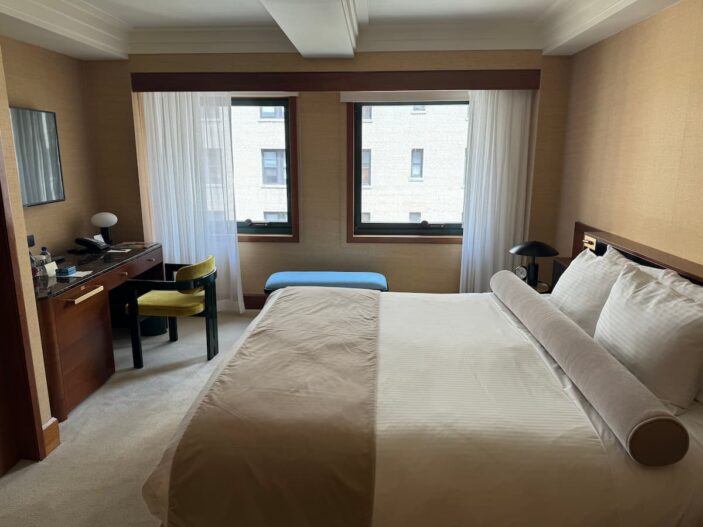
My Deluxe King is a nice and comfortable 305-square-feet with a generously sized marble bathroom that features a typical shower-tub combo.
Like a lot of other historic hotels in the city, size and comfort take precedence of ornate design. There’s nothing loud about it. But there’s very little that’s loud about Japanese design anyway, favouring a meditative approach that keeps the bedroom’s main purpose of rest and relaxation front and centre. It’s one of the most comfortable rooms I’ve stayed in across Manhattan.
Some have skyline views but mine does not, facing an office or apartment building instead. I tour the hotel with the General Manager and manage to see a fair few of the other suites, with the most distinctive being the expensive Tatami Suite that doubles down on traditional Japanese design with tatami mats and shoji paper screens. It’s large, homely and has no doubt hosted many Japanese politicians and celebrities over the years.
This hotel has stories to tell, and they are likely nowhere near as wild and unfettered as some of the other luxury hotels in Manhattan.
Food & Drink
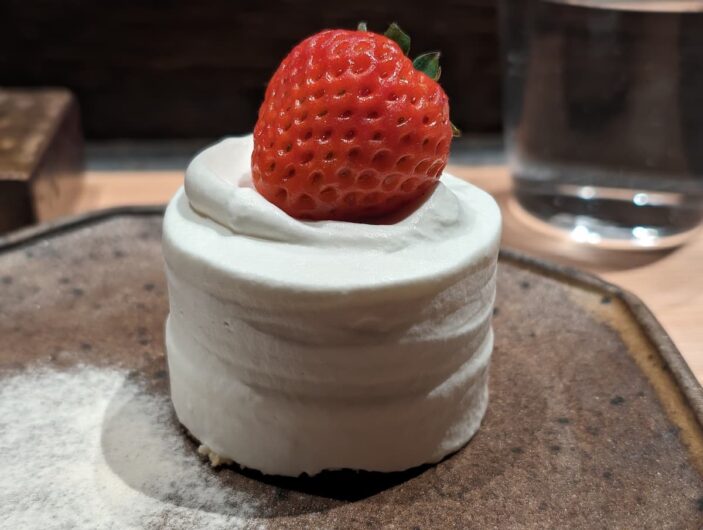
I spent a month eating around New York City around my stay at Prince Kitano earlier this year. So it says a lot that one of the meals I’m still thinking about regularly is the excellent kaiseki set menu at hakubi. Located beneath the lobby, the hotel’s signature restaurant rests on tranquility and is clearly well-attended when I head on down.
The colour palate adds a bit of life to the elegant space, but the sushi bar is where the magic happens. I watch as the chef slices sashimi super thin fresh sashimi and pops gently places it in front of me. I’ve been to Tokyo around eight times in my life but haven’t set foot in Japan since the pandemic (not by choice). I get slightly emotional throughout the kaiseki as the flavours and delicate textures instantly take me to a nondescript sushi counter in Ginza or a hidden gem in Shimokita.
Dishes rest on traditional offerings with hardly much room for experimentation. It’s perfect for those who just want a familiar kaiseki without anyone trying to be too modern. Although there are a few surprises. The A5 wagyu with spring vegetables is, as you’d expect, exceptional. The fried abalone is soft and texturally perfect. The Nagoya-style grilled eel on kama-cooked rice sits on another level altogether.
But it’s surprisingly dessert that really makes the meal a special one. A subversive strawberry shortcake with Oiishi strawberries. The soft, creamy strawberries perfectly play with the souffle-like shortcake, melting with the fluffy texture for an incredibly rich, memorable flavour.
On the other side of the scale, the hotel has a rooftop bar and restaurant. It’s not open during my stay but I climb up to see the magnificent view that stretches out in all directions. I’d imagine dinner downstairs followed by drinks upstairs is a popular way to spend a few hours in the hotel.
I would be doing you a disservice, however, if I didn’t mention Hillside Cafe. The all-day eatery is located at the back of the lobby and is a small, largely inconsequential space where the breakfast buffet is set up. Service here is not as efficient as everywhere else in the hotel, and the breakfast buffet is very limited and closer to standard. I’m told they do a la carte as well but wasn’t able to try during my stay.
Amenities
While there is no spa, there is a state-of-the-art fitness centre with all the latest equipment and a good range of machines, weights and cardio equipment.
Service
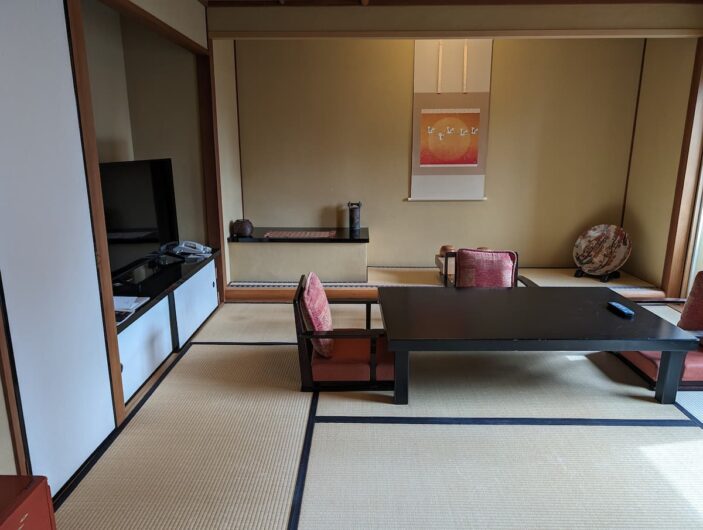
As mentioned throughout this review, the service at Prince Kitano is near-faultless and exactly what you’d expect from a staff catering to mostly Japanese business and leisure tourists. It’s calm, comforting and anticipatory, which is much more than I can say for the reactive service at some other Manhattan hotels. There seems to be very little the hotel staff won’t accommodate almost immediately, and local tips from staff are top-notch.
Value
According to Google you’re looking at around $1,469 a night for a stay at The Prince Kitano New York. That’s not the kind of money your average visitor to New York would want to part with, but for those with deep pockets, you are getting a lot in return.
Not only will you get access to one of the most underrated Japanese restaurants in New York City, and a spectacular rooftop jazz bar, but the understated design, immaculate service and unmatched sense of privacy all help dramatically in this town.
![]()
![]()
![]()
![]()
![]()
FOUR AND A HALF STARS (OUT OF FIVE)
The Prince Kitano New York
Address: 66 Park Ave, E 38th St, New York, NY 10016
Contact: +1 212-885-7000
The author flew to New York City on Delta Air Lines and explored the city as a guest of NYC Tourism.
